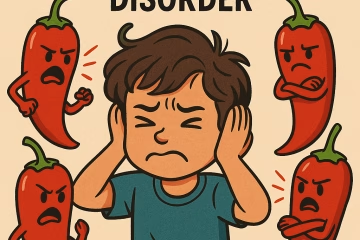
Understanding Masking in SEND Children
Many children with special educational needs and disabilities (SEND) have to make their greatest effort daily, and nobody sees this. They hide their stims, practice jokes, copy friends expressions and anything to look like others and not to stand out. This strategy is called masking (or social camouflaging), and while it can help a child survive the school day, it often comes at a steep psychological cost.
The National Autistic Society describes masking as the conscious or unconscious attempt “to appear non-autistic in order to blend in and be more accepted in society.” It can happen anywhere in a noisy classroom, on the playground, or even at home. First documented in autism research, masking is now recognised across the neurodivergent spectrum, including ADHD, where children may force themselves to sit still, hide impulsive comments or script conversations in advance.
Why do children feel they have to mask?
Masking is often a safety device. The Children’s Society notes that neurodivergent young people start camouflaging to avoid attention or behaviours they cannot control. They learn that fitting in is rewarded with praise, while authenticity can mean ridicule or punishment. Over time, this external pressure is internalised into a chronic fear of “being found out,” compelling them to stay “on script” even when exhausted. Children may feel the need to mask with friends to fit in or in the classroom to avoid getting in trouble.
Spotting the invisible workload
Adults may see a polite child who participates just enough and manages to get on with their day. However, the pressure of this often unravels at home and can lead to full meltdown on stepping through the front door. A meta-analytic review highlights, how draining this hidden performance can be. In 4 to 17 year olds, higher masking scores correlated with significantly heightened levels of anxiety and depressive symptoms. Teachers who rely solely on outward behaviour often miss escalating a child’s needs before it’s too late. This is often why your child may appear completely different at school or with friends than they do at home, or why parents highlight their child’s need for intervention and school don’t agree.
Girls and Masking
Masking is not distributed evenly. An Education study reports that autistic girls often rely on memorising peer slang, copying friendships, scripting eye-contact to cover their difficulties. Leading to later or missed diagnoses compared with boys. Females are said to be more likely to mask for a number of reasons such as sexism, stereotypes or ideals such as ‘boys will be boys’, but girls must learn how to behave in the correct manner. This gendered masking helps explain why autism and ADHD are still under-identified in girls and non-binary young people, despite comparable prevalence rates.
Mental-health costs
Research states that masking keeps children safe in the moment, but predicts poorer mental-health outcomes. A 2024 systematic review found that frequent masking is associated with higher anxiety, depression and suicidality. Rationale for this is the continued effort can lead to autistic burnout, a state of profound exhaustion, loss of skills and heightened sensory sensitivity. Autistic girls and women appear especially vulnerable.
School belonging
Masking can increase a person’s sense of belonging, as peers accept the version of themselves that they are displaying. Yet, this can also increase anxiety, since every interaction with friends, teachers or some family members risks exposure.In other words, the very strategy that wins social acceptance may undermine emotional safety.
How parents and professionals can help children unmask safely
Model acceptance– Celebration and acceptance of sensory needs, such as stim-toys, headphones or movement breaks.
Teach self-advocacy – Practicing asking the teacher for something that will help, such as dimming the lights or for explaining a sensory need to friends.
Strength-based language – Praise their unique qualities such as, problem-solving, curiosity or creativity instead of compliance.
Offer recovery time– Create spaces where children can decompress, at home or school. Areas where they can be themselves, with no masking required. Ask the child what they like best, low light, quiet music, no noise ect
Train staff in masking– If a parent has escalated concern or informed how their child likes certain things, go with it. Notice how children react to noise, light or certain textures.
Policy and system changes
Diagnostic criteria – This must change to meet with and account for updated research into masking, especially in girls and mixed-neurotype profiles.
Teacher-training standards – This needs to be improved. Teaching staff should have to complete mandatory training in neurodiversity, in order for them to express an opinion on your child’s presentation and needs and should include modules on masking.
Attendance policies – More flexibility is needed for our SEND children. Emails and phone calls to a parent that is dealing with an ongoing meltdown due to the child not wanting to attend school is creating a barrier between home and school, and pushing for the child to mask harder.
Mental-health funding – Now this is an absolute need. SEND children are known to be at higher risk of mental health difficulties, why is something not put into place straight away? Why are parents not given information before the child’s mental health declines? Why do we have to wait for crisis for anyone to help?
A final word
Masking is an survival skill, but it should never be a child’s strategy for navigating school, friendships and family life. When adults recognise the rationale for the masking, creating environments where neurodivergent traits are welcomed and celebrated, children can focus their energy on who they are and what amazing things they have to offer the world.



0 Comments